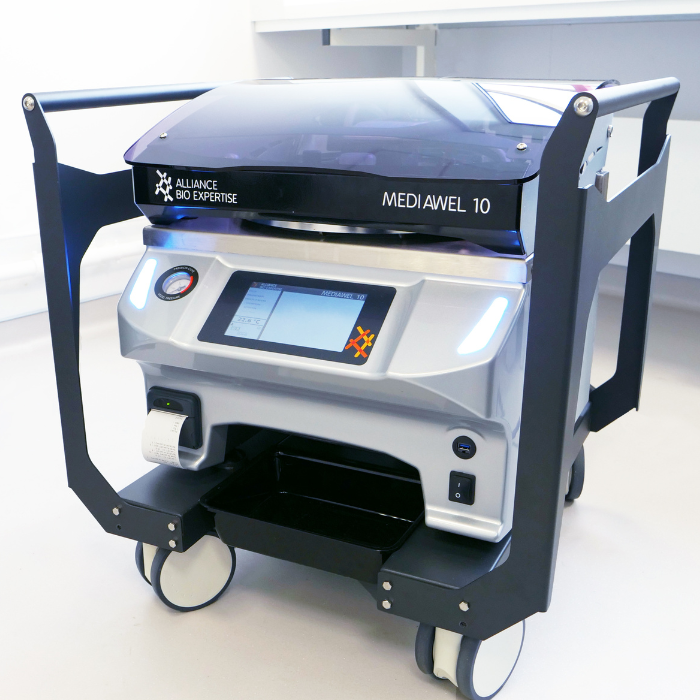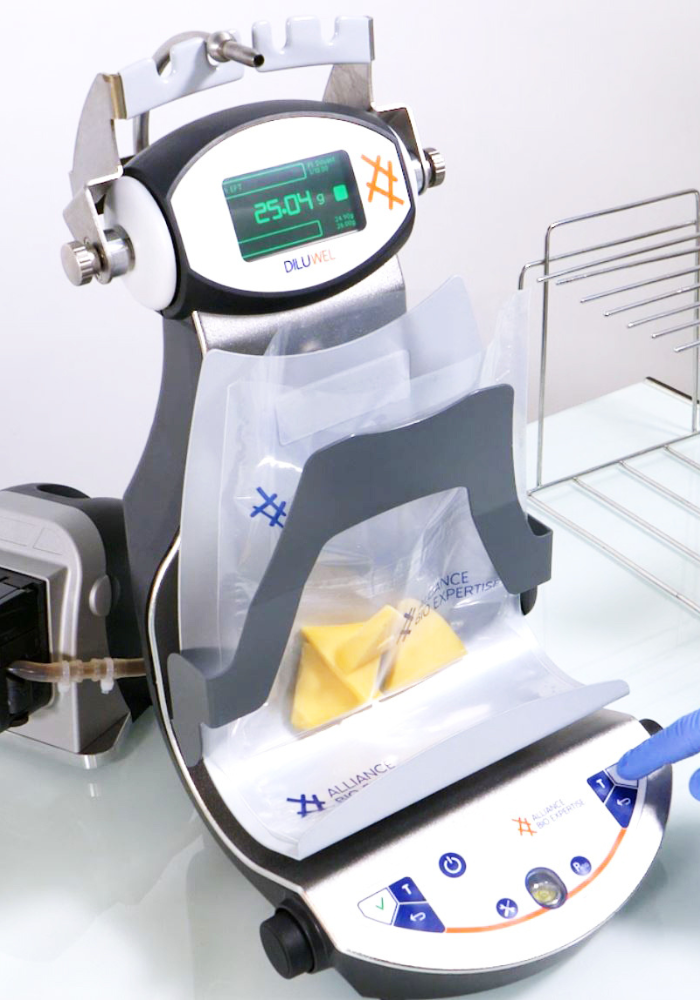
Advantages and Disadvantages: Media Preparation Methods
Laboratories tend to meet their culture media requirements by either manual preparation; purchasing pre-made media; or by using an automated media preparator. Each of these methods has its advantages and disadvantages. Have the needs of your laboratory changed over the years? Is it time to change the way you prepare your media? Kirsty McTear, Microbiologist at Don Whitley Scientific, discusses each method.
Manual preparation
Manual media preparation certainly has its place when small quantities of media are required. However, manual preparation can be labour intensive and time consuming. Also, media made manually is prone to contamination due to the step-wise nature of preparation and the associated exposure to air, glassware and human contact. Each step, from boiling up the media and water on a hotplate, to autoclaving, cooling and pouring, has the potential to introduce contamination.
Standard autoclaves may not guarantee complete sterility. They often only measure the temperature of the chamber and, as it takes longer for a liquid to reach the required sterilisation temperature, the autoclave may finish its cycle too early. The temperature subsequently displayed after cooling may be misleading due to heat retention by the media. Transferring extremely hot media directly to cool in a water bath presents a potential safety hazard and another opportunity for contamination. It can also be difficult to ensure homogeneity through uniform blending of ingredients, when preparing large quantities of media.
As long as the appropriate precautions are taken, manual preparation is still effective and useful when trying to avoid wastage.
Off the shelf products
An increasing number of pre-prepared media products are now available, providing an alternative to manual in-house preparation. The most popular formats include ready-to-pour bottled liquid media, pre-poured plates, and liquid media pouches. Bags containing sterile powdered media to which sterile water is added are also available. Although an element of preparation still exists with this approach, mixing sterile components removes the need for sterilisation and is useful when preparing thermally-sensitive media. Care must be taken, however, to ensure effective mixing of media while it is contained within a bag or pouch.
The advantages of bought-in media include:
- It is much less time consuming than manual preparation.
- Quality control and associated regulatory requirements become the responsibility of the culture media supplier rather than the testing laboratory, and can therefore be easier to defend during an audit.
- For media that is particularly difficult to prepare manually, purchased media provides a clear advantage.
- It could be cost-effective to purchase pre-prepared media if it is to be used sporadically.
Although pre-prepared media offers a time-saving solution, it does not address the need to accurately predict the quantities required for future testing. In sudden high-volume testing situations, microbiologists may be left without sufficient supplies of a particular culture media. Alternatively, if testing slows down or the workload has been miscalculated, it may become necessary to dispose of media that has passed its expiration date. As with any pre-made products, the cost of purchasing pre-prepared media can also prove prohibitive to some non-commercial laboratories.
Automated media preparation
The most flexible, cost-effective solution is to prepare media in-house using an automated media preparator. This approach allows preparation and sterilisation to be performed using specialist equipment. Using a media preparator, rather than a standard autoclave, provides a clear advantage as effective sterilisation is ensured. Media can be maintained at a specific temperature if required, or cooled to allow dispensing. Users can be confident that media is at the temperature displayed and therefore reduce the risk of burns or scalds. To eliminate hot spots and ensure thorough mixing, media is continuously stirred without introducing air bubbles.
|
Most automated media preparators have ports to allow sterile additives to be added aseptically following sterilisation. Heat-sensitive supplements can be prepared by aseptically rehydrating a sterile powdered ingredient or vials of pre-prepared liquid supplements can be used. These can be added through the ports on the automated media preparator, once the media has been cooled to the appropriate holding temperature.
|
 |
Processed sterile media is dispensed directly from the automated preparator with the aid of a peristaltic pump. It is also possible to connect media preparators to automated plate pourers, such as the DISTRIWEL. This allows prepared agar plates to be stacked ready for use. Combining an automated media preparator with a pourer/stacker is ideal as prepared media can be quickly poured into plates with minimal risk of contamination. The media preparator is connected to the pourer/stacker with sterilised tubing via a pump so that over 700 plates in an hour can be dispensed. The DISTRIWEL has an integrated refrigeration plate for rapid cooling to ensure uniform, level plates. In addition to automated pourers, it is also possible to connect media preparators to gravimetric diluters (see the DILUWEL) for precise dilution of bulk samples.
 |
Every aspect of automated media preparation is controlled electronically on the equipment directly or via a computer. All programme parameters are displayed and can be adjusted to create customised sterilisation cycles. To ensure traceability, operator names and batch numbers can be entered and it is possible to add a chart recorder and/or barcode reader. The addition of a Petri dish labelling machine would also reduce potential labelling errors and truly automate the media production process. There is a perception that automated media preparators are expensive, however when one considers the amount of time they save and the reduced chance of contamination, they are an excellent method of producing consistent, high quality culture media in small or large batches, whenever it is needed. |
Choosing the best method
When considering the most suitable methods for preparing microbiological culture media, it would appear that the volume required dictates the need for automation. For laboratories with predictable workloads, purchased media certainly provides a time-saving option with additional regulatory benefits.
Those requiring high-quality, homogenous media on tap can benefit from using automated preparators that offer safe, reproducible and traceable culture media. When considering the most appropriate method, care must be taken to balance the demands of laboratory workloads, budgets and specific requirements to guarantee quality sterile media.
For more information about automated media preparation solutions, please contact the DWS sales team on T: 01274 595728 or E: sales@dwscientific.co.uk


 en
en


 xEnglish
xEnglish